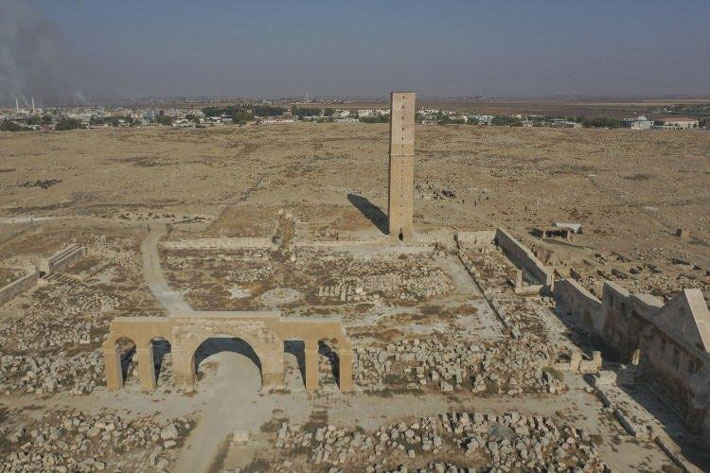Traces of Medieval Madrassa Uncovered in Turkey
The ruins of a 12th-century madrassa (Islamic school) have been discovered in Turkey’s southeast, one of the world’s oldest settlements on the UNESCO World Heritage Tentative List, said the archaeologist leading the dig.
Excavation work has been going on for eight years in the Harran settlement in the Sanliurfa province, Mehmet Onal, head of the Archeology Department at Harran University, told Anadolu Agency.
Harran, a onetime Assyrian and Umayyad capital located 44 kilometres (27 miles) southeast of the city of Sanliurfa near the Syrian border, was an important Mesopotamian trade centre on a road running south to Nineveh in modern Iraq and has been continuously inhabited since 6,000 B.C.

Saying that Harran is frequently mentioned in history books because it is one of the world’s oldest settlements, Onal added that during 2021 excavations, they found important remains such as a street, a monumental gate, and a madrassa.
Monumental find
“During the excavations, a madrassa was found, which we have determined with archaeological evidence that it belongs to the Zengid era,” said Onal.
“Previously, it was known that Harran had five madrassas. This was the first time we came across one of these known madrassas of Harran.”
He said they have determined the structure had 24 rooms above ground, and have now completely exposed the monumental door of the madrassa with five rooms, and the portico partially, adding that there is also a kitchen next to those rooms with large stoves and a brick and clay oven.
“Another feature of the kitchen is there are many bones of sheep and goats inside the hearths and ovens. This shows us that food was prepared here and people here left the city in a rush, leaving the food on the stove without being eaten as if thoroughly convinced that Mongols would take over the city.”
Onal said that they determined that the madrasa belongs to the 12th century and that they will learn more after excavations in the region are completed.
World’s first university
Cihat Koc, a local official in Harran, said the history of education in Harran dates back to 3,000 B.C., adding that studies were carried out in such fields as astronomy, mathematics, philosophy, and theology.
Harran is a place that pioneered the science and scientific education, Koc said, adding: “With our work this year, we have unearthed the first of the five big madrassas, five big university campuses.
“The world’s first university is at Harran. We are seriously working to uncover all the ruins of this university,” he underlined.
The first excavations in Harran began in 1950.
The site has been on UNESCO’s tentative list since 2000.
READ ALSO: ARCHAEOLOGISTS IDENTIFY THE OLDEST MUSLIM GRAVES EVER FOUND IN EUROPE
Harran is an important ancient city where trade routes from Iskenderun to Antakya (ancient Antioch) and Kargam were located, according to UNESCO’s website.
“The city is mentioned in the Holy Bible,” says the website.
“It is important not only for hosting early civilizations but it is the place where the first Islamic university was founded. The traditional civil architecture, mudbrick houses with conic roofs, are unique.”





